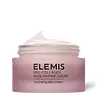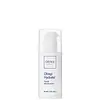What's inside
What's inside
 Key Ingredients
Key Ingredients

 Benefits
Benefits

 Concerns
Concerns

 Ingredients Side-by-side
Ingredients Side-by-side

Water
Skin ConditioningGlycerin
HumectantCaprylic/Capric Triglyceride
MaskingGlyceryl Stearate Se
EmulsifyingIsononyl Isononanoate
EmollientDicaprylyl Carbonate
EmollientDimethicone
EmollientPhenoxyethanol
PreservativePolyacrylate-13
Cetyl Alcohol
EmollientStearic Acid
CleansingTocopheryl Acetate
AntioxidantCoco-Caprylate
EmollientRosa Hybrid Flower Water
MaskingXanthan Gum
EmulsifyingPolyisobutene
Bentonite
AbsorbentParfum
MaskingTocopherol
AntioxidantCitric Acid
BufferingButyrospermum Parkii Butter
Skin ConditioningChlorphenesin
AntimicrobialTriticum Vulgare Germ Oil
EmollientChlorella Vulgaris Extract
Skin ConditioningGlyceryl Polyacrylate
Daucus Carota Sativa Root Extract
Skin ConditioningGlyceryl Acrylate/Acrylic Acid Copolymer
HumectantDisodium EDTA
Padina Pavonica Thallus Extract
Skin ConditioningSodium Dehydroacetate
PreservativePolysorbate 20
EmulsifyingSorbitan Isostearate
EmulsifyingCitronellol
PerfumingGeraniol
PerfumingGinkgo Biloba Leaf Extract
Skin ConditioningPorphyridium Cruentum Extract
Skin ConditioningCollagen Amino Acids
MoisturisingBenzyl Salicylate
PerfumingSodium Benzoate
MaskingPotassium Sorbate
PreservativeLeuconostoc/Radish Root Ferment Filtrate
AntimicrobialPelargonium Graveolens Oil
MaskingRosa Damascena Flower Oil
MaskingRosa Damascena Extract
MaskingWater, Glycerin, Caprylic/Capric Triglyceride, Glyceryl Stearate Se, Isononyl Isononanoate, Dicaprylyl Carbonate, Dimethicone, Phenoxyethanol, Polyacrylate-13, Cetyl Alcohol, Stearic Acid, Tocopheryl Acetate, Coco-Caprylate, Rosa Hybrid Flower Water, Xanthan Gum, Polyisobutene, Bentonite, Parfum, Tocopherol, Citric Acid, Butyrospermum Parkii Butter, Chlorphenesin, Triticum Vulgare Germ Oil, Chlorella Vulgaris Extract, Glyceryl Polyacrylate, Daucus Carota Sativa Root Extract, Glyceryl Acrylate/Acrylic Acid Copolymer, Disodium EDTA, Padina Pavonica Thallus Extract, Sodium Dehydroacetate, Polysorbate 20, Sorbitan Isostearate, Citronellol, Geraniol, Ginkgo Biloba Leaf Extract, Porphyridium Cruentum Extract, Collagen Amino Acids, Benzyl Salicylate, Sodium Benzoate, Potassium Sorbate, Leuconostoc/Radish Root Ferment Filtrate, Pelargonium Graveolens Oil, Rosa Damascena Flower Oil, Rosa Damascena Extract
Water
Skin ConditioningGlycerin
HumectantCaprylic/Capric Triglyceride
MaskingButyrospermum Parkii Butter
Skin ConditioningCyclopentasiloxane
EmollientGlyceryl Stearate
EmollientCetyl Alcohol
EmollientDimethicone
EmollientSaccharide Isomerate
HumectantStearic Acid
CleansingPolysilicone-11
Glycine Soja Sterols
EmollientPersea Gratissima Oil
Skin ConditioningMangifera Indica Seed Butter
Skin ConditioningHydrolyzed Caesalpinia Spinosa Gum
AbsorbentCaesalpinia Spinosa Gum
Skin ConditioningHydrolyzed Soybean Fiber
Skin ProtectingSodium Stearoyl Glutamate
CleansingCaprylyl Glycol
EmollientBisabolol
MaskingAllantoin
Skin ConditioningTocopherol
AntioxidantTetrahydrodiferuloylmethane
AntioxidantPanthenol
Skin ConditioningCarbomer
Emulsion StabilisingHexylene Glycol
EmulsifyingSodium Hydroxide
BufferingLaureth-12
EmulsifyingEthylhexylglycerin
Skin ConditioningPhenoxyethanol
PreservativeWater, Glycerin, Caprylic/Capric Triglyceride, Butyrospermum Parkii Butter, Cyclopentasiloxane, Glyceryl Stearate, Cetyl Alcohol, Dimethicone, Saccharide Isomerate, Stearic Acid, Polysilicone-11, Glycine Soja Sterols, Persea Gratissima Oil, Mangifera Indica Seed Butter, Hydrolyzed Caesalpinia Spinosa Gum, Caesalpinia Spinosa Gum, Hydrolyzed Soybean Fiber, Sodium Stearoyl Glutamate, Caprylyl Glycol, Bisabolol, Allantoin, Tocopherol, Tetrahydrodiferuloylmethane, Panthenol, Carbomer, Hexylene Glycol, Sodium Hydroxide, Laureth-12, Ethylhexylglycerin, Phenoxyethanol
 Reviews
Reviews

Ingredients Explained
These ingredients are found in both products.
Ingredients higher up in an ingredient list are typically present in a larger amount.
This ingredient is also known as shea butter. It is an effective skin hydrator and emollient.
Emollients help soothe and soften your skin. It does this by creating a protective film on your skin. This barrier helps trap moisture and keeps your skin hydrated. Emollients may be effective at treating dry or itchy skin.
Shea butter is rich in antioxidants. Antioxidants help fight free-radicals, or molecules that may harm the body. It is also full of fatty acids including stearic acid and linoleic acid. These acids help replenish the skin and keep skin moisturized.
While Shea Butter has an SPF rating of about 3-4, it is not a sunscreen replacement.
Shea butter may not be fungal acne safe. We recommend speaking with a professional if you have any concerns.
Learn more about Butyrospermum Parkii ButterThis ingredient is an emollient, solvent, and texture enhancer. It is considered a skin-softener by helping the skin prevent moisture loss.
It helps thicken a product's formula and makes it easier to spread by dissolving clumping compounds.
Caprylic Triglyceride is made by combining glycerin with coconut oil, forming a clear liquid.
While there is an assumption Caprylic Triglyceride can clog pores due to it being derived from coconut oil, there is no research supporting this.
Learn more about Caprylic/Capric TriglycerideCetyl Alcohol is a fatty alcohol. Fatty Alcohols are most often used as an emollient or to thicken a product.
Its main roles are:
Though it has "alcohol" in the name, it is not related to denatured alcohol or ethyl alcohol.
The FDA allows products labeled "alcohol-free" to have fatty alcohols.
Learn more about Cetyl AlcoholDimethicone is a type of synthetic silicone created from natural materials such as quartz.
What it does:
Dimethicone comes in different viscosities:
Depending on the viscosity, dimethicone has different properties.
Ingredients lists don't always show which type is used, so we recommend reaching out to the brand if you have questions about the viscosity.
This ingredient is unlikely to cause irritation because it does not get absorbed into skin. However, people with silicone allergies should be careful about using this ingredient.
Note: Dimethicone may contribute to pilling. This is because it is not oil or water soluble, so pilling may occur when layered with products. When mixed with heavy oils in a formula, the outcome is also quite greasy.
Learn more about DimethiconeGlycerin is already naturally found in your skin. It helps moisturize and protect your skin.
A study from 2016 found glycerin to be more effective as a humectant than AHAs and hyaluronic acid.
As a humectant, it helps the skin stay hydrated by pulling moisture to your skin. The low molecular weight of glycerin allows it to pull moisture into the deeper layers of your skin.
Hydrated skin improves your skin barrier; Your skin barrier helps protect against irritants and bacteria.
Glycerin has also been found to have antimicrobial and antiviral properties. Due to these properties, glycerin is often used in wound and burn treatments.
In cosmetics, glycerin is usually derived from plants such as soybean or palm. However, it can also be sourced from animals, such as tallow or animal fat.
This ingredient is organic, colorless, odorless, and non-toxic.
Glycerin is the name for this ingredient in American English. British English uses Glycerol/Glycerine.
Learn more about GlycerinPhenoxyethanol is a preservative that has germicide, antimicrobial, and aromatic properties. Studies show that phenoxyethanol can prevent microbial growth. By itself, it has a scent that is similar to that of a rose.
It's often used in formulations along with Caprylyl Glycol to preserve the shelf life of products.
Stearic Acid is a fatty acid. It is an emollient, emulsifier, and texture enhancer.
As an emollient, stearic acid helps soften skin. It aids the skin's protective barrier by preventing water loss. It also provides a gentle cleansing effect without stripping away natural oils.
Stearic acid may also be used to enhance the texture of products. It can add volume and stabilize ingredients such as water and oil. This can help water and oil ingredients from separating.
Sources of stearic acid include animal or vegetable fats/oils such as coconut or shea. It can be naturally found in butter, cocoa butter, shea butter, vegetable fats, and animal tallow.
This ingredient may not be Malassezia folliculitis, or fungal-acne safe.
Learn more about Stearic AcidTocopherol (also known as Vitamin E) is a common antioxidant used to help protect the skin from free-radicals and strengthen the skin barrier. It's also fat soluble - this means our skin is great at absorbing it.
Vitamin E also helps keep your natural skin lipids healthy. Your lipid skin barrier naturally consists of lipids, ceramides, and fatty acids. Vitamin E offers extra protection for your skin’s lipid barrier, keeping your skin healthy and nourished.
Another benefit is a bit of UV protection. Vitamin E helps reduce the damage caused by UVB rays. (It should not replace your sunscreen). Combining it with Vitamin C can decrease sunburned cells and hyperpigmentation after UV exposure.
You might have noticed Vitamin E + C often paired together. This is because it is great at stabilizing Vitamin C. Using the two together helps increase the effectiveness of both ingredients.
There are often claims that Vitamin E can reduce/prevent scarring, but these claims haven't been confirmed by scientific research.
Learn more about TocopherolWater. It's the most common cosmetic ingredient of all. You'll usually see it at the top of ingredient lists, meaning that it makes up the largest part of the product.
So why is it so popular? Water most often acts as a solvent - this means that it helps dissolve other ingredients into the formulation.
You'll also recognize water as that liquid we all need to stay alive. If you see this, drink a glass of water. Stay hydrated!
Learn more about Water